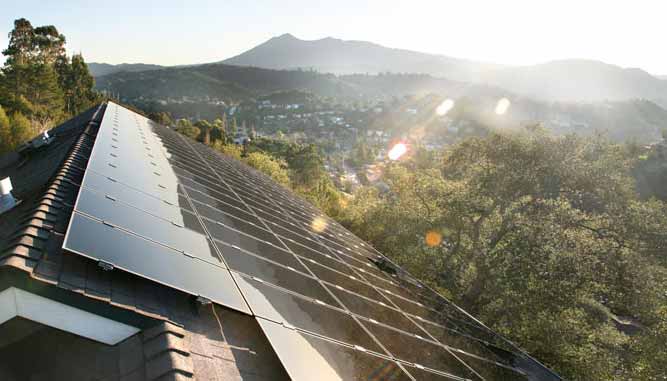SolarCity aims to double residential solar in U.S.


SolarCity has secured a US$344 million U.S. Department of Energy (DOE) loan guarantee that will allow it to begin a project that could double the number of residential solar photovoltaic installations in the country.
The funds will be used to install rooftop solar panels on military housing complexes across the country in 33 states. It would yield potentially 371 megawatts of new solar generation capacity.
The DOE is providing a conditional loan guarantee for lenders including USRG Renewable Finance and Bank of America. SolarCity says the projected, dubbed “SolarStrong” will create approximately $1 billion in construction work.
“We believe the SolarStrong model will deliver the most affordable solar option available to military housing, and provide a template for financing large-scale residential solar projects well into the future,” Aaron Gillmore, SolarCity’s vice president of solar development said in a prepared statement.
In June, the DOE announced a similar action for Project Amp, which provided a $1.4 billion conditional loan that will be used to install 733 megawatts (MW) worth of solar panels on industrial buildings throughout the nation.
SolarStrong will help the U.S. military move closer toward its goal having renewables constitute 25 percent of its energy mix by 2025.
To that end, the military has deployed wave powered buoys, reclaimed landfill gas to power Marine bases, used biofuel blends in Air Force fighter jets, developed hybrid Army blimps, and an entire Marine Corps unit in Afghanistan is now functioning entirely on solar power.
Related on SmartPlanet:
- Marine base turns green from landfill gas
- Gitmo goes green with solar power
- U.S. Army’s gunshot detector may save lives
- Video: “Robocop” glasses can identify outlaws
- Pondering new emergency shelter designs
- U.S. Army to get new hybrid blimps for Afghanistan
- How America’s proudest technological achievements become movie props
- How the Iraq War made the U.S. military greener
- Navy fights terrorism with wave energy
This post was originally published on Smartplanet.com